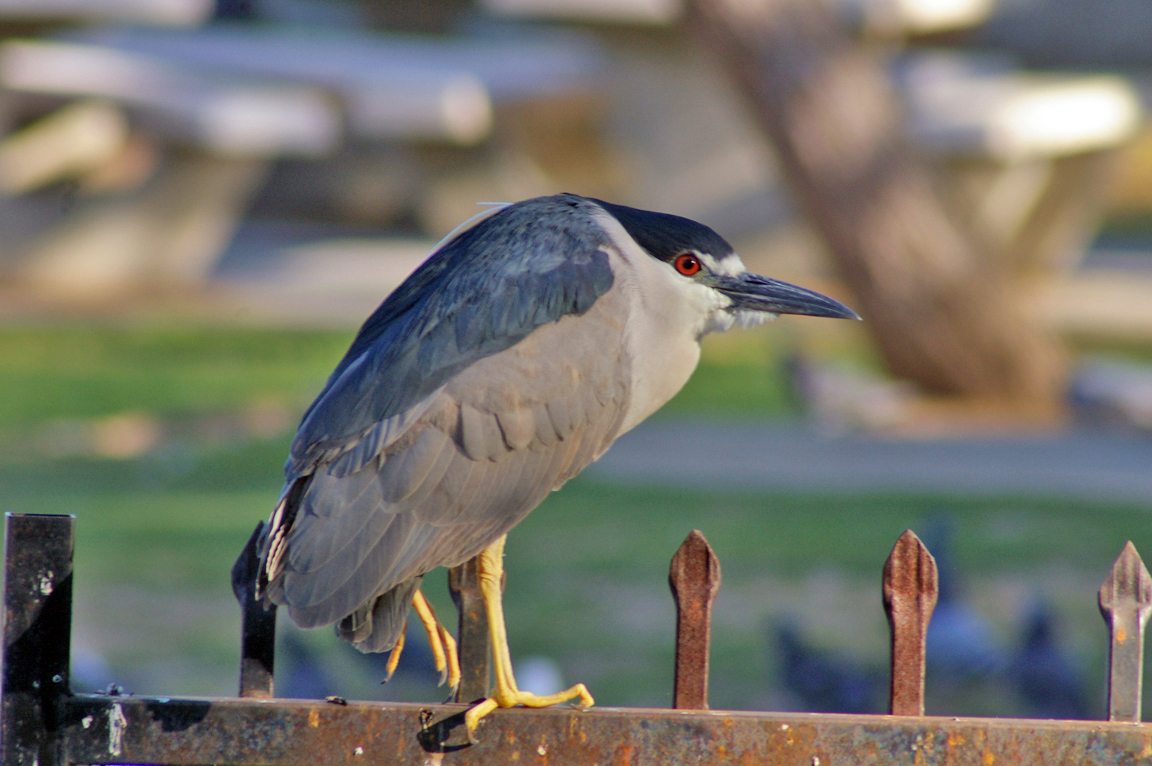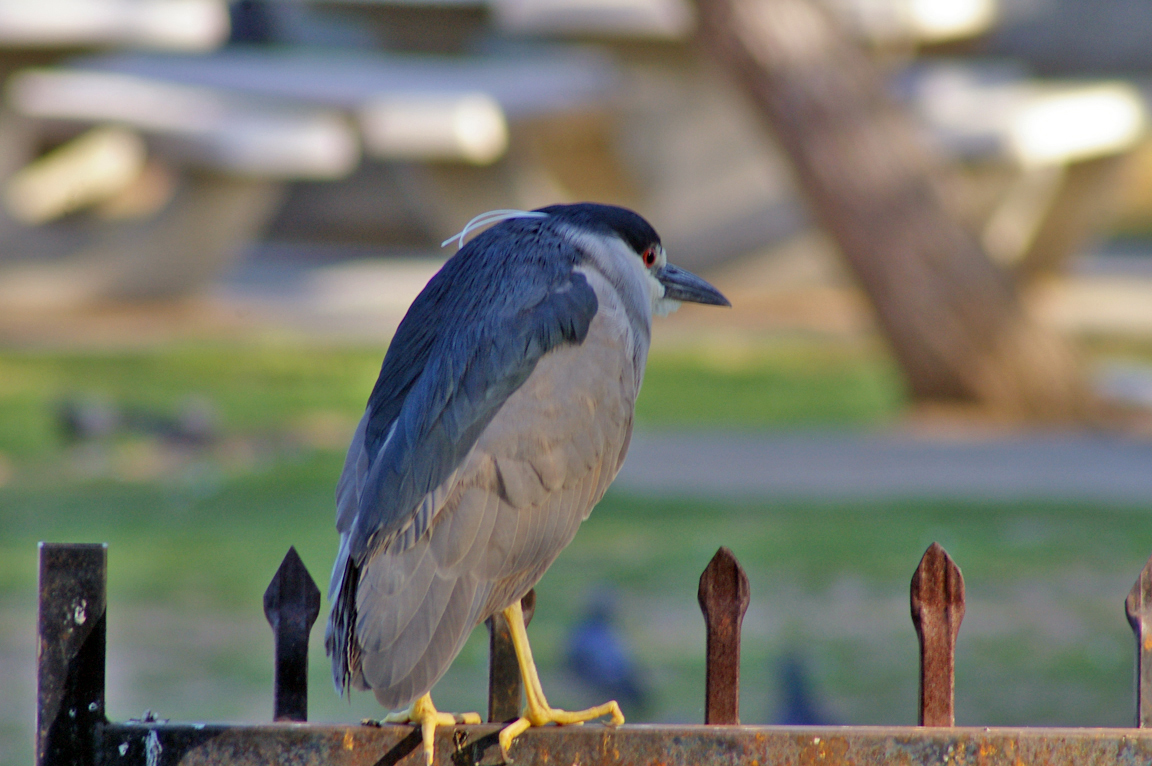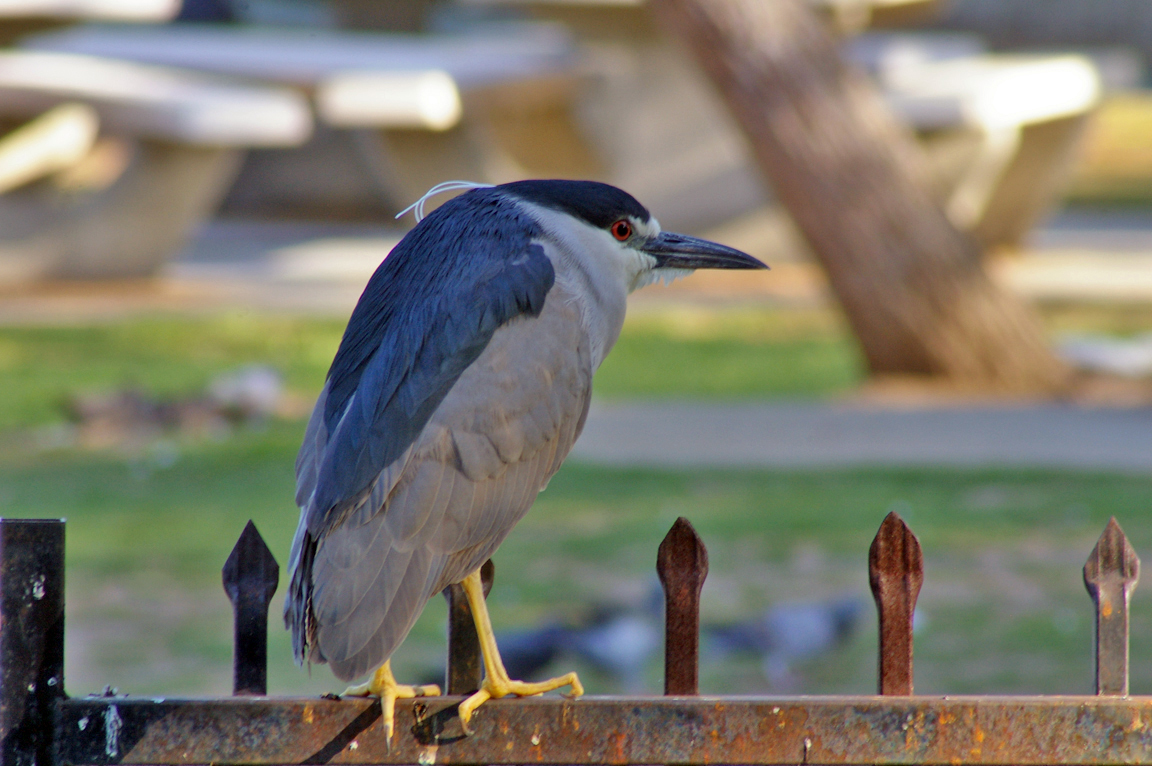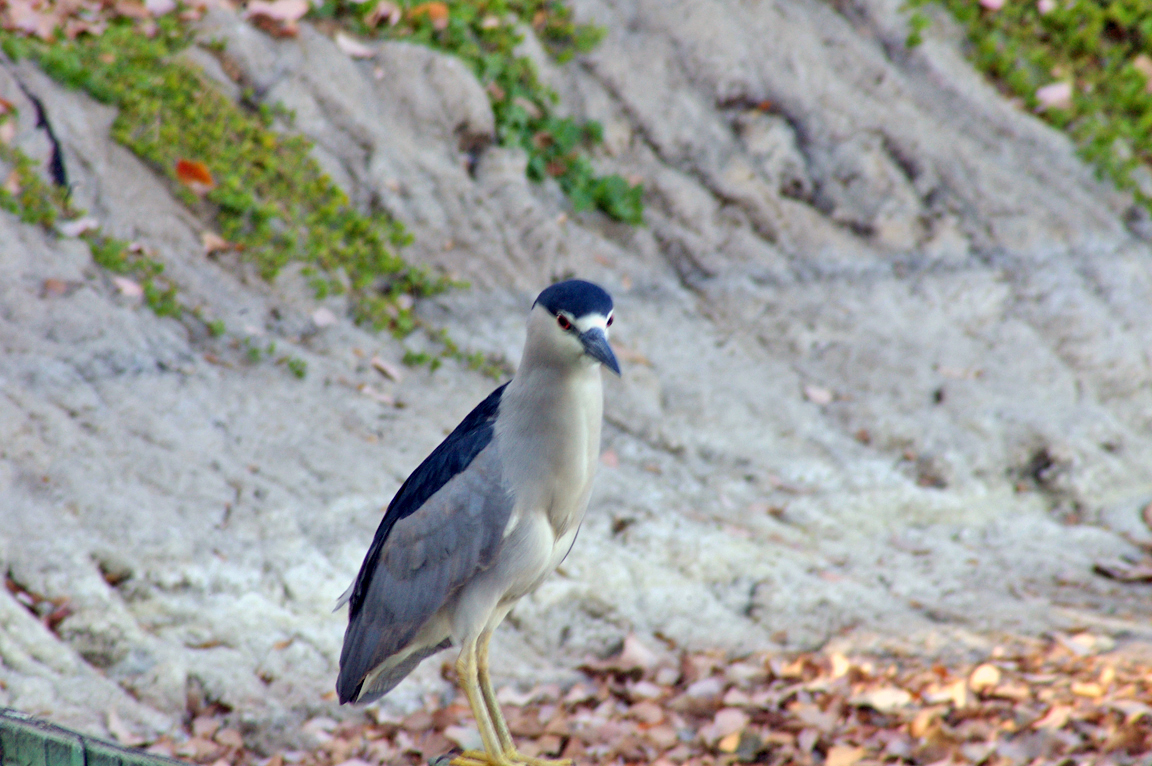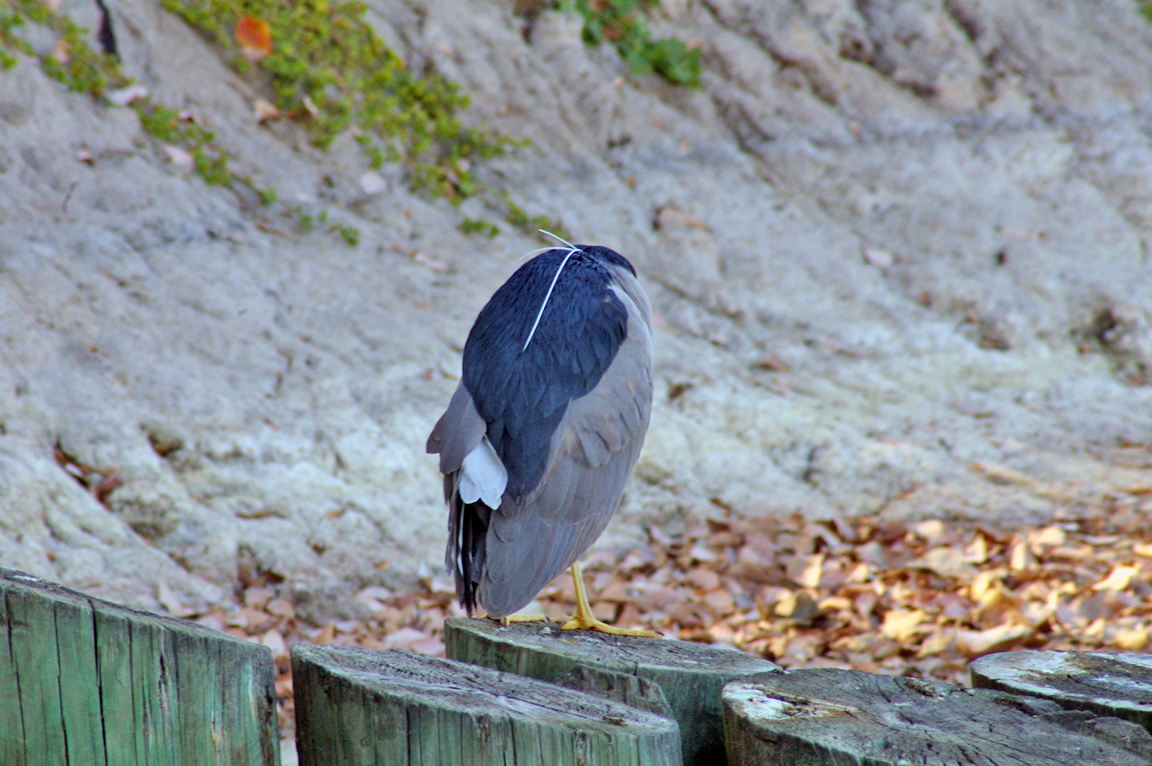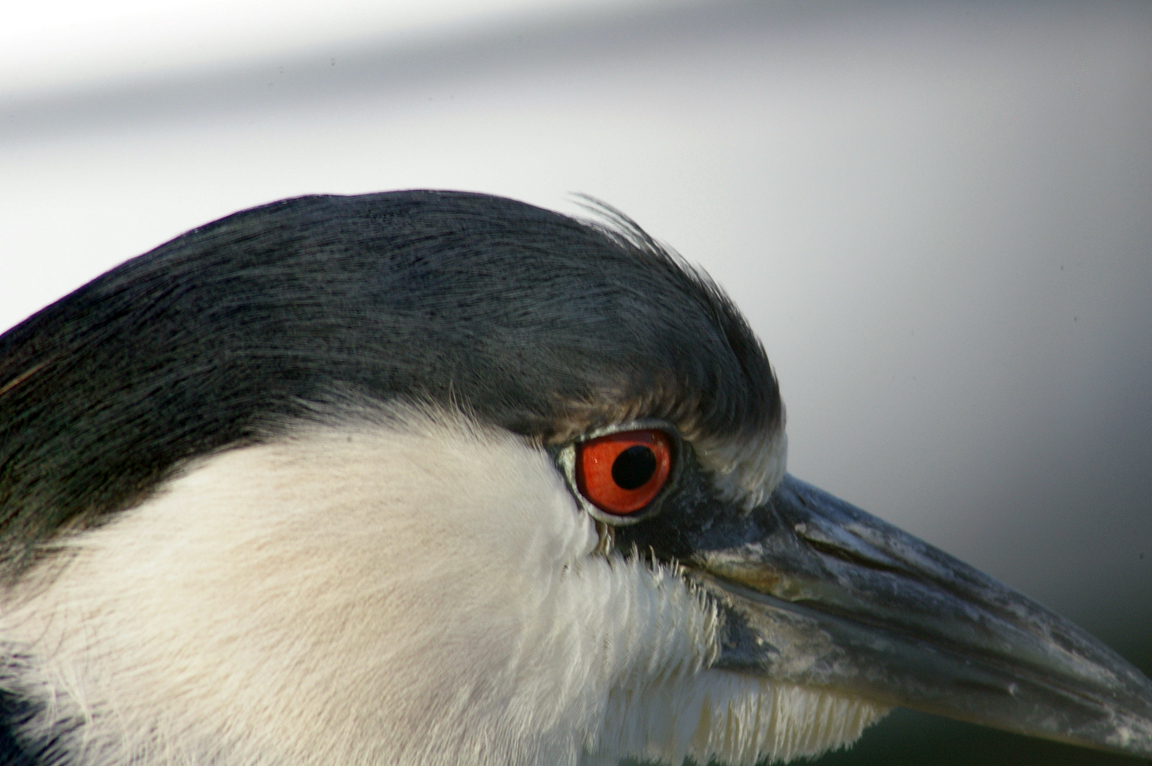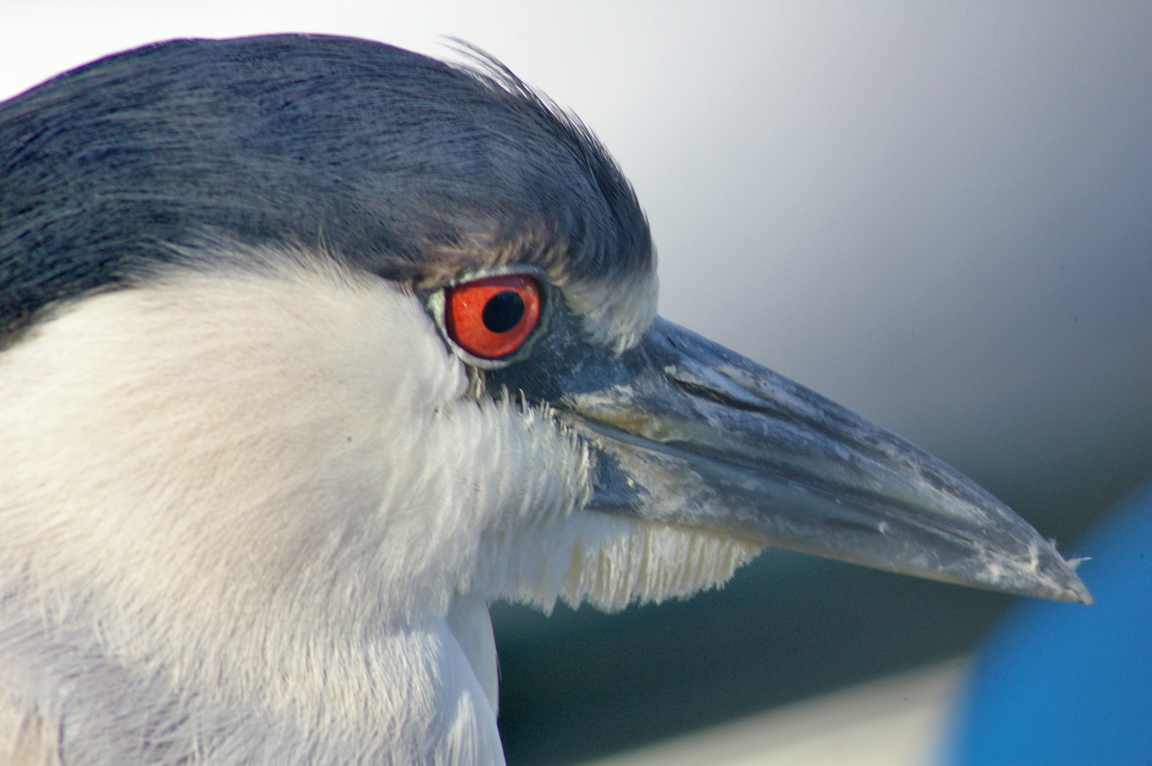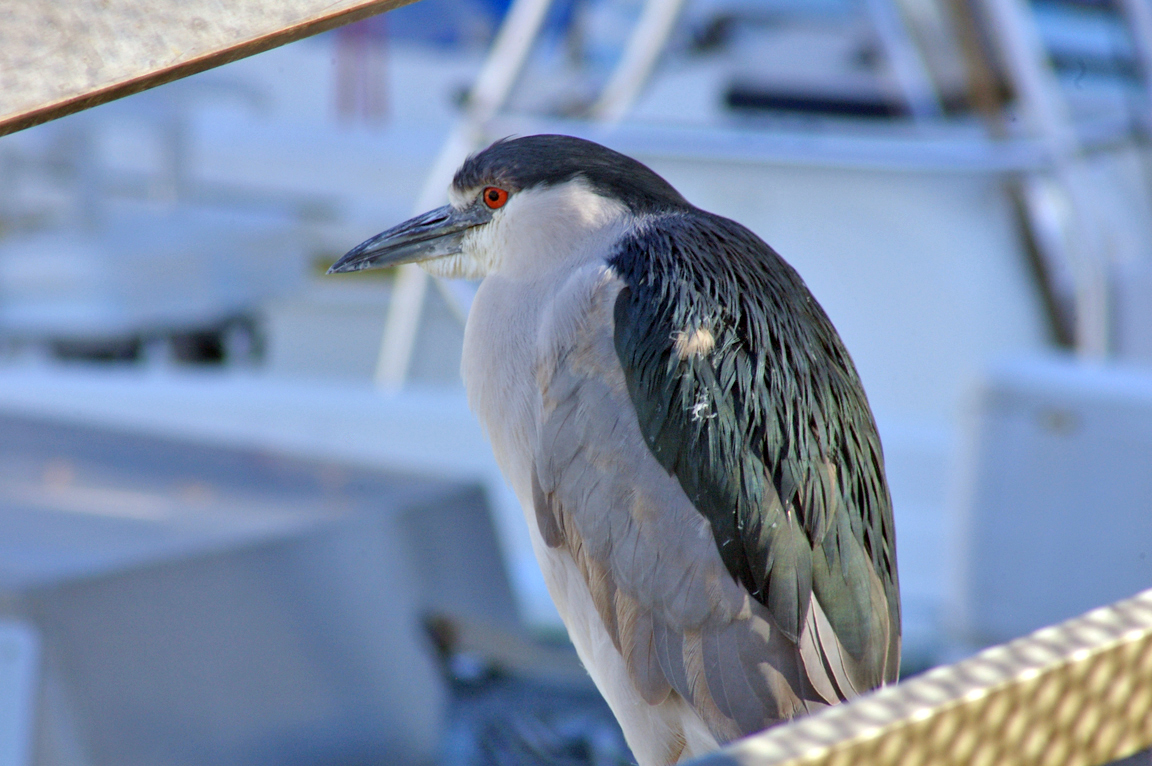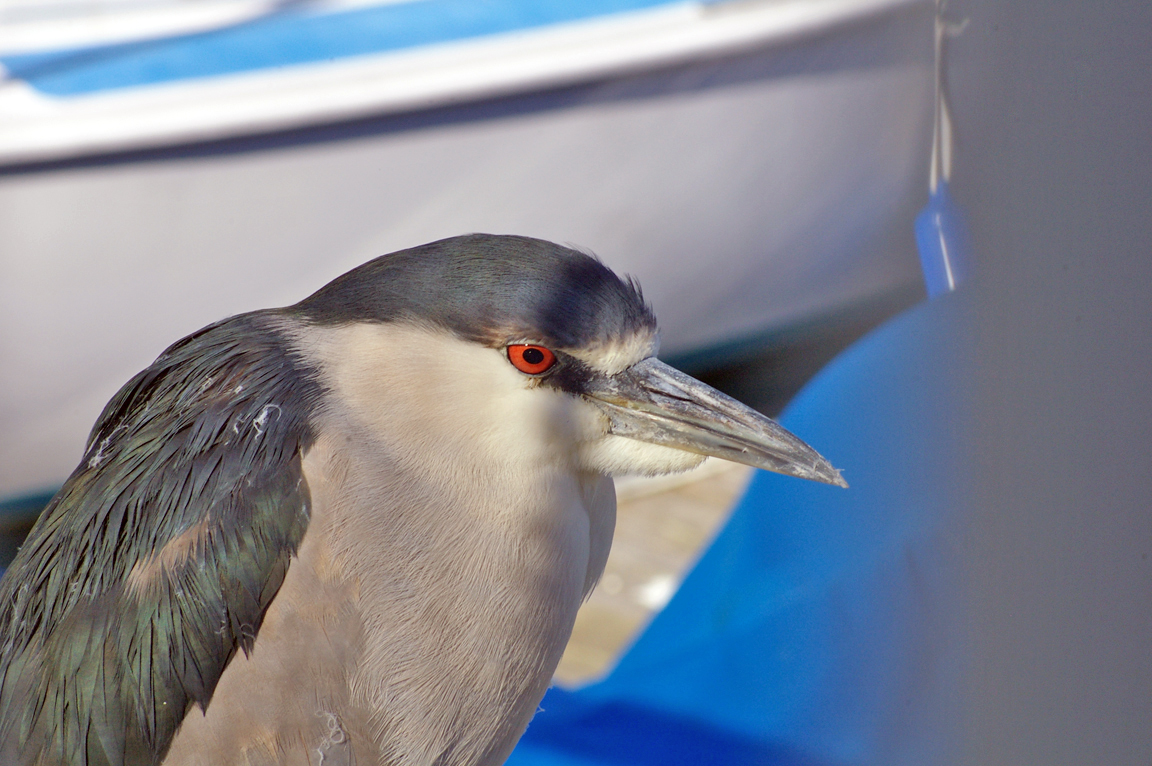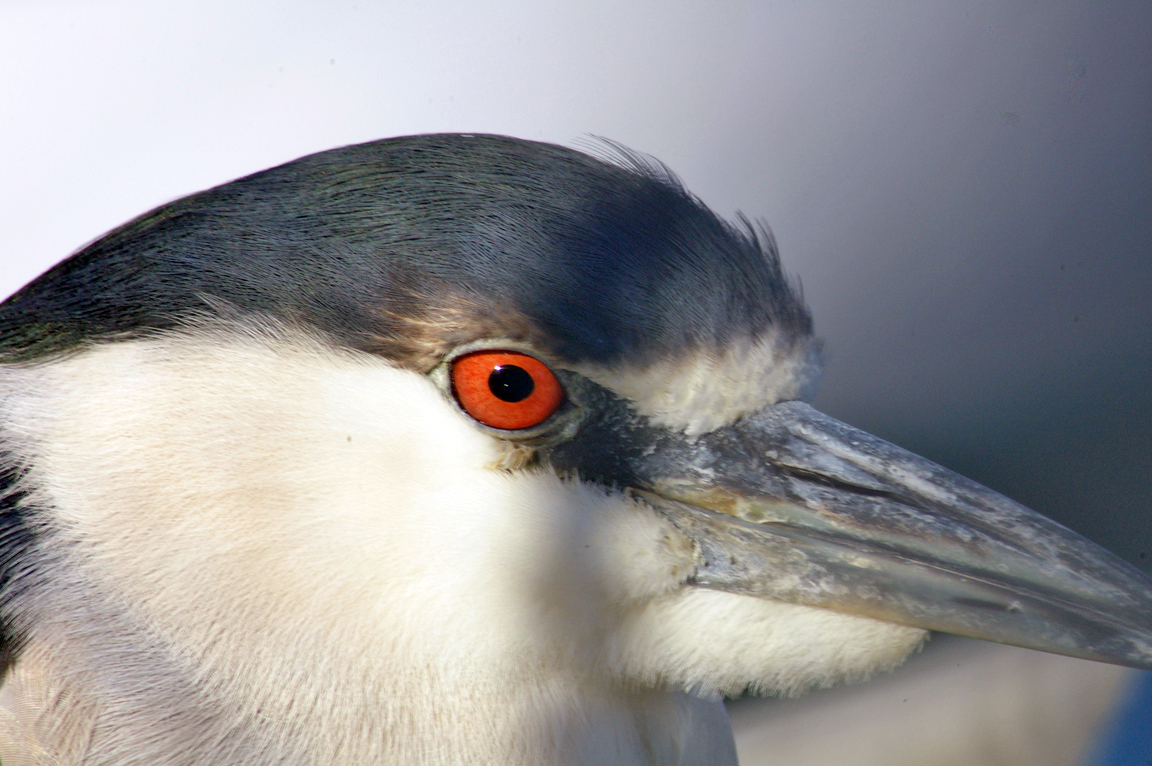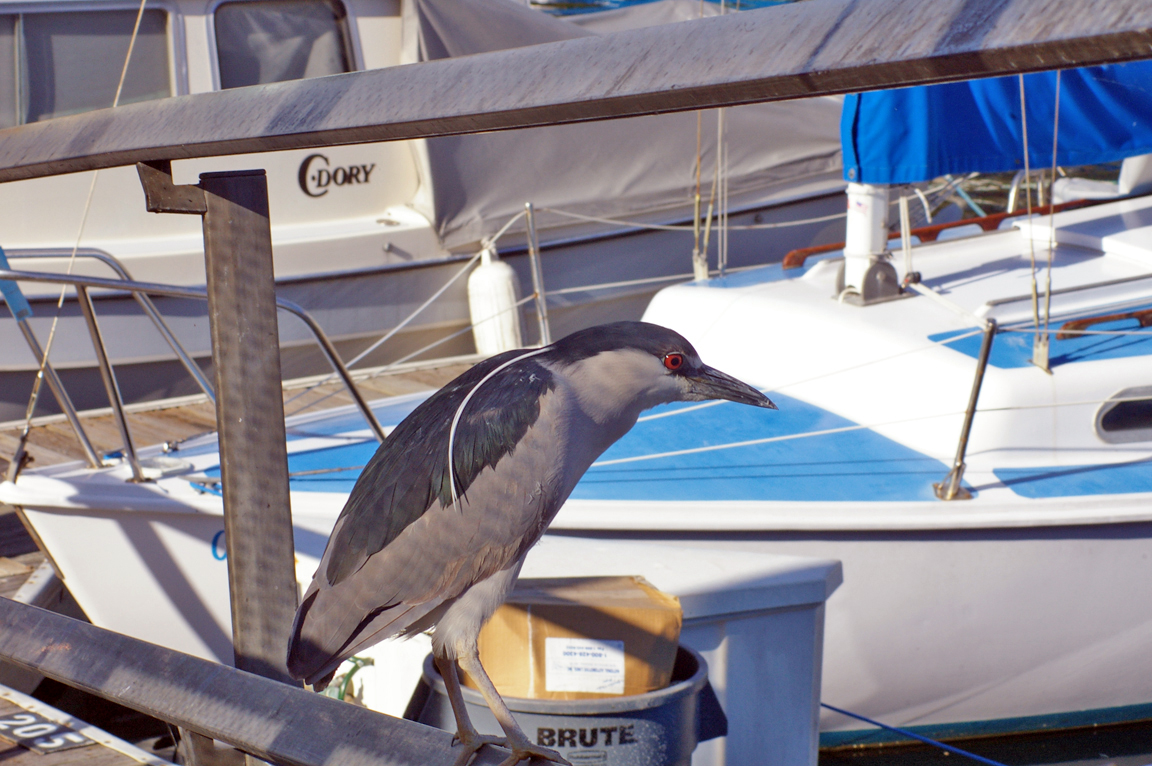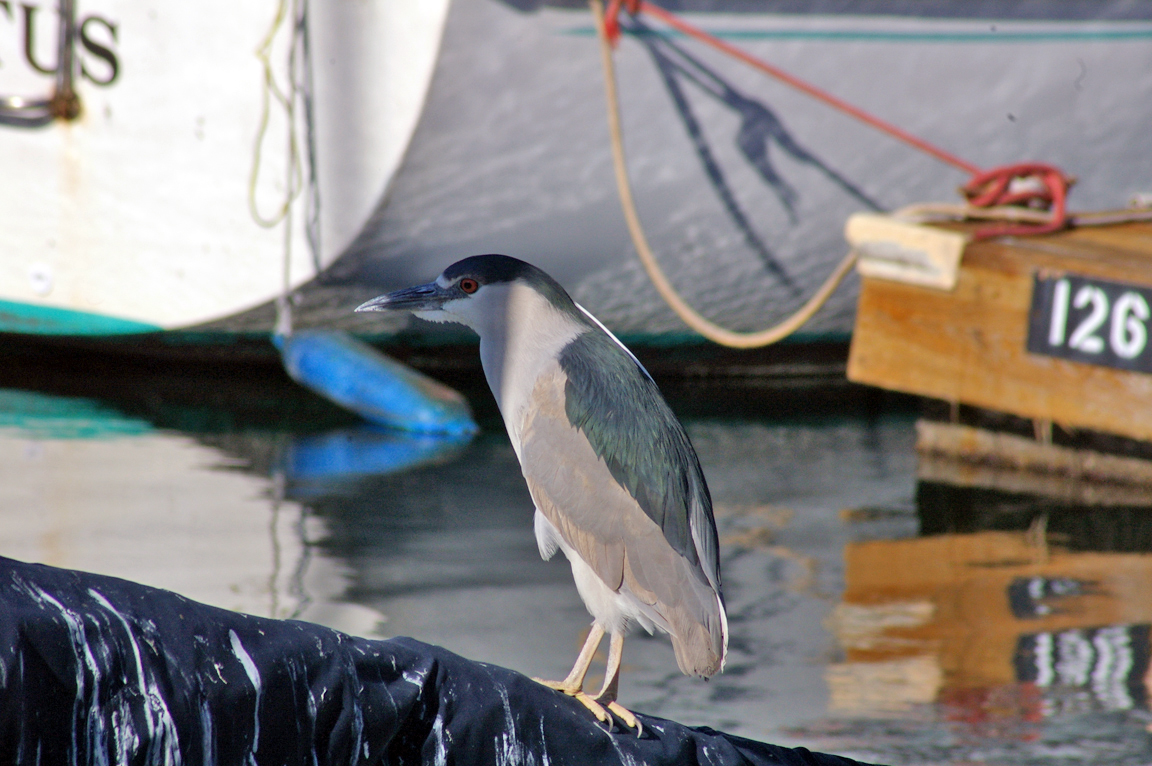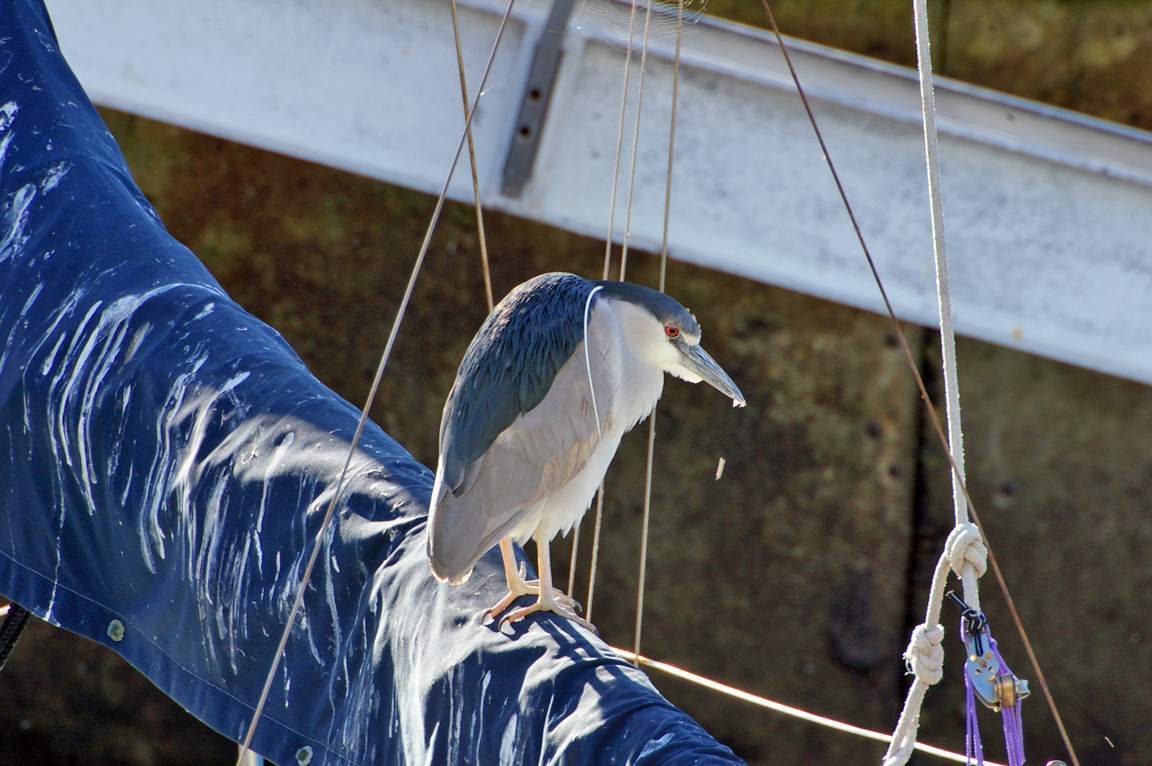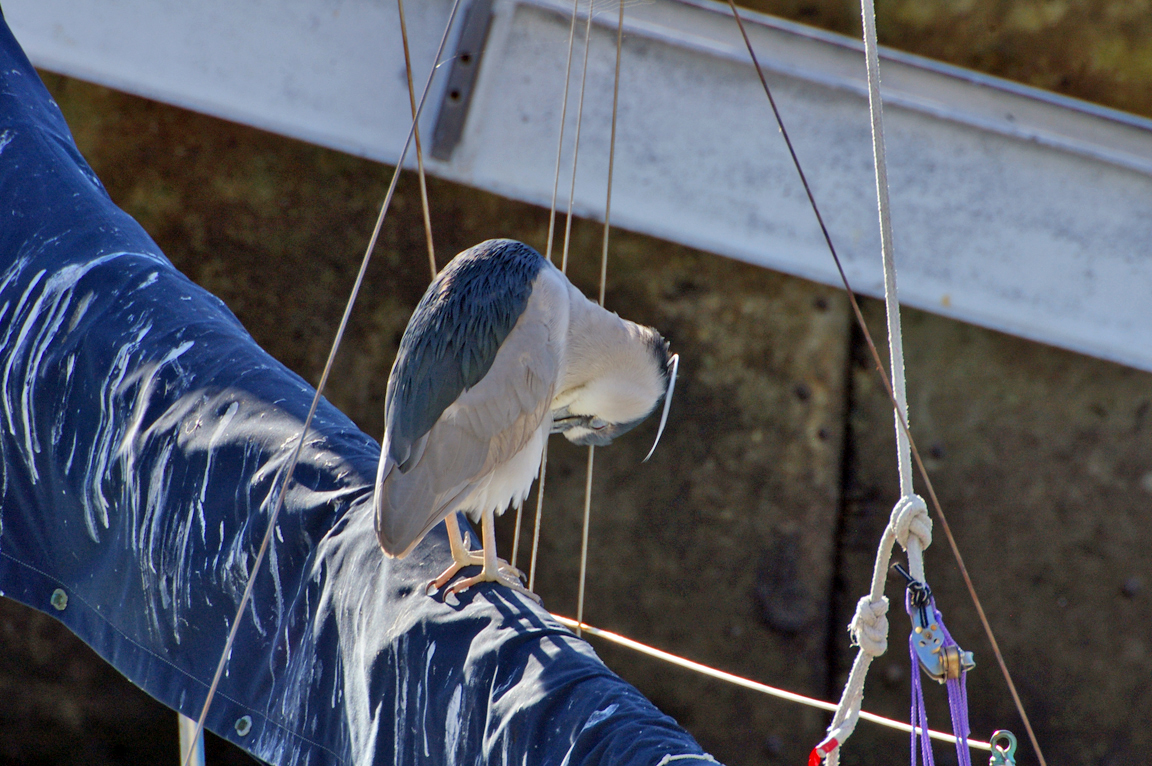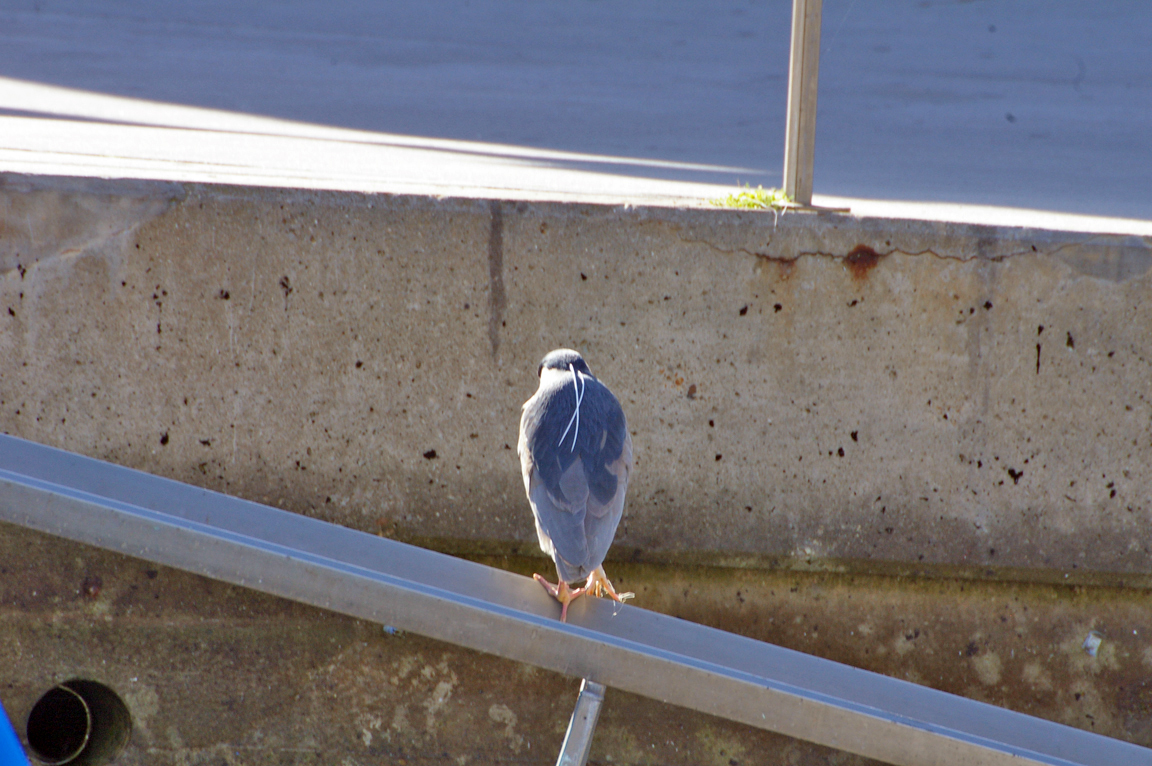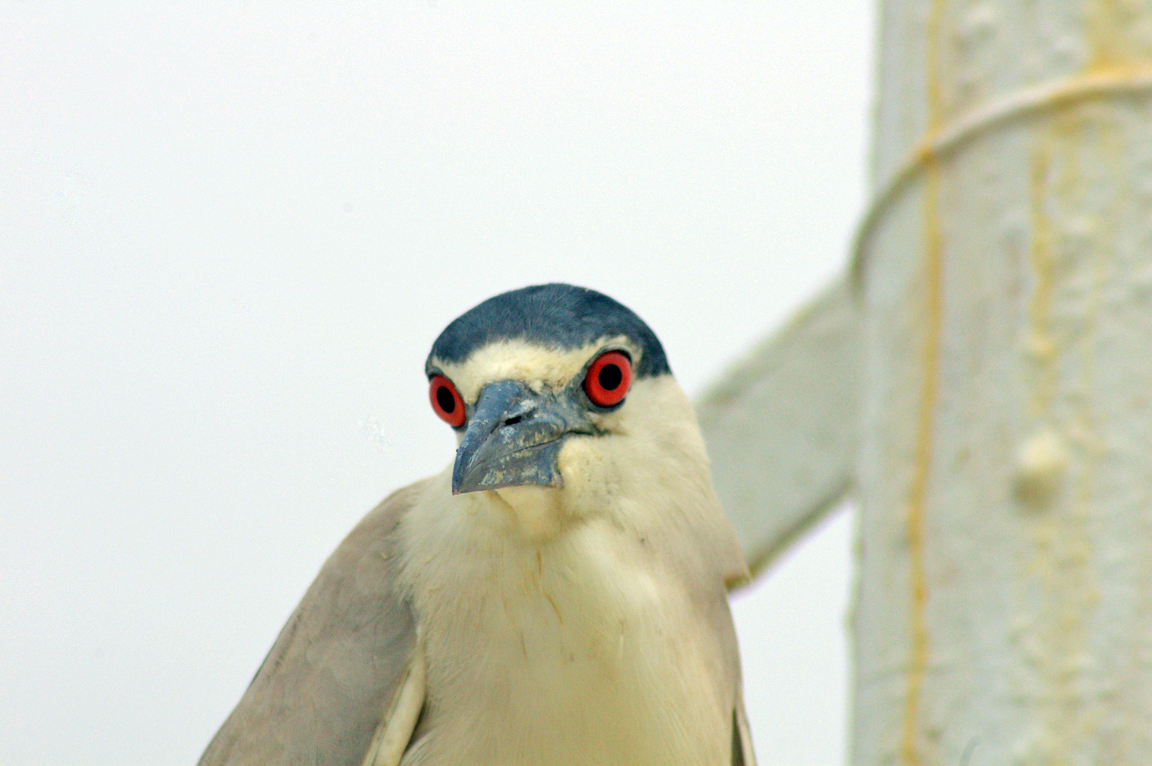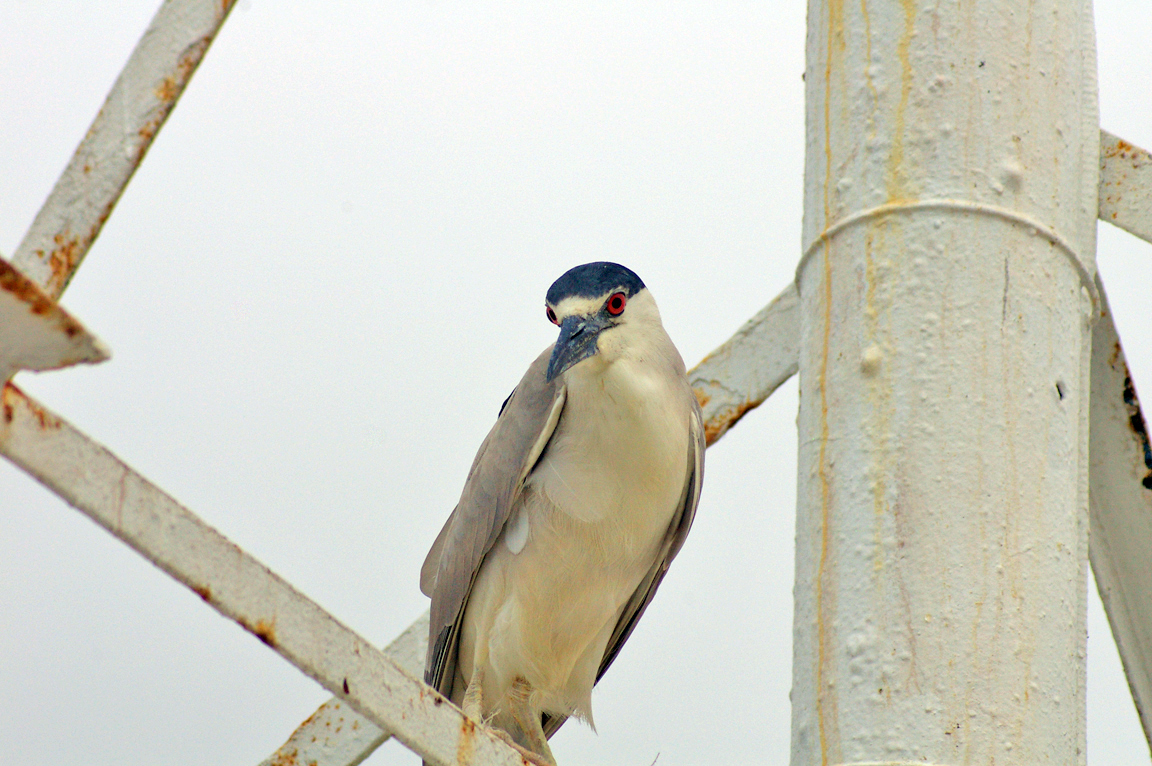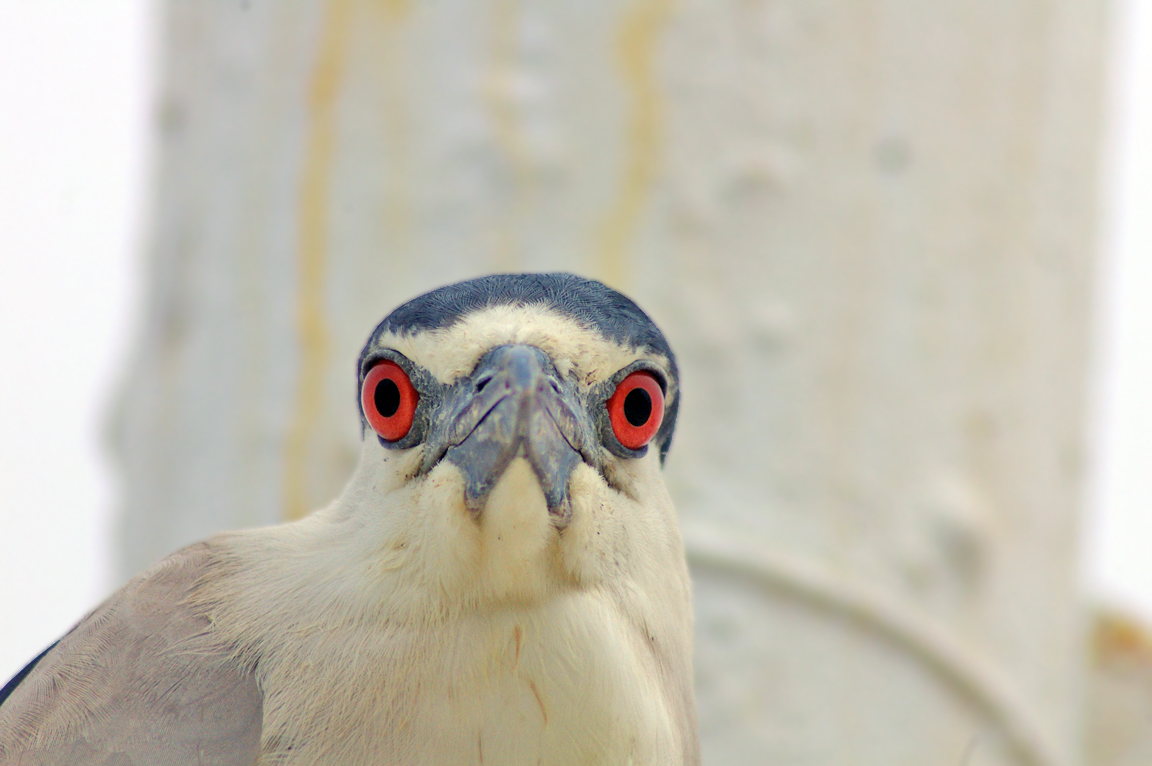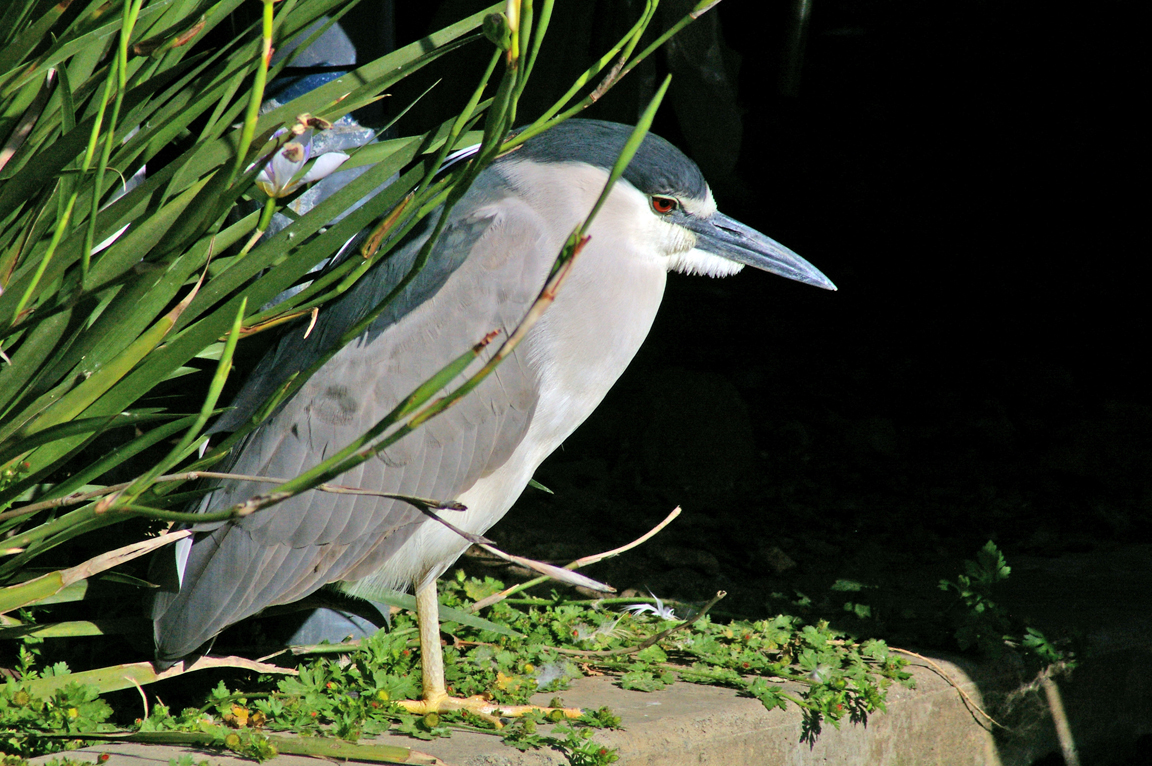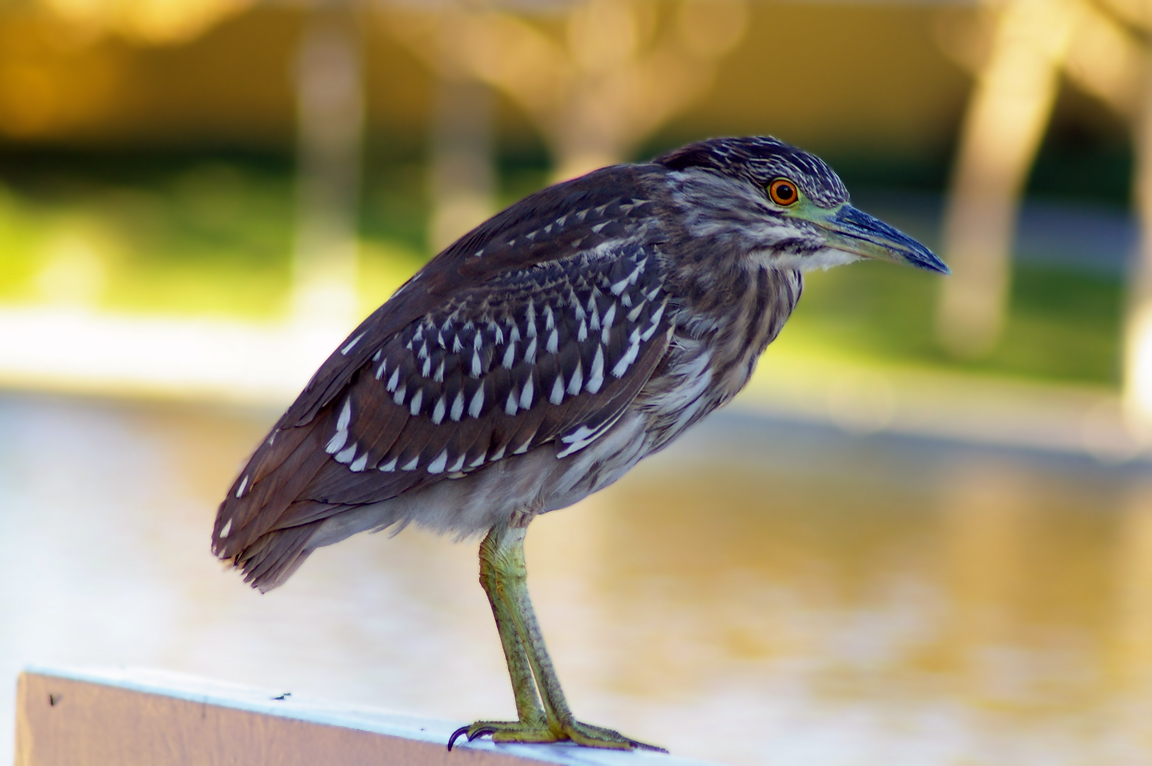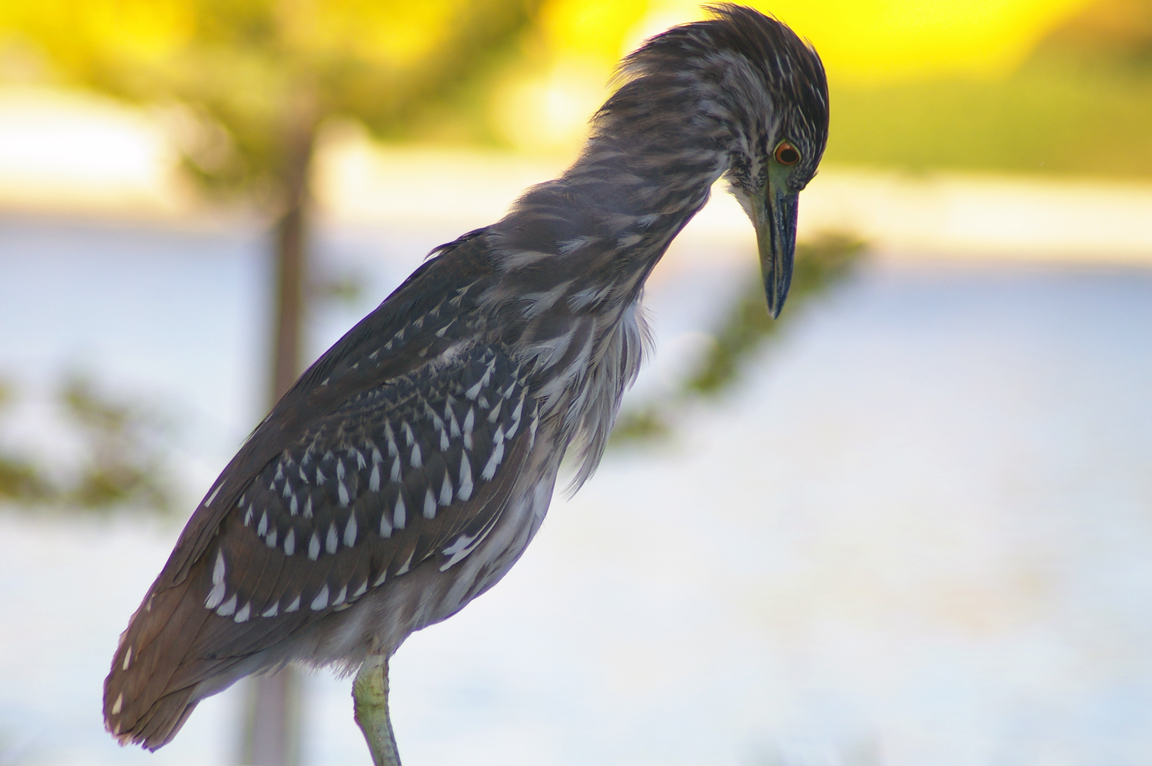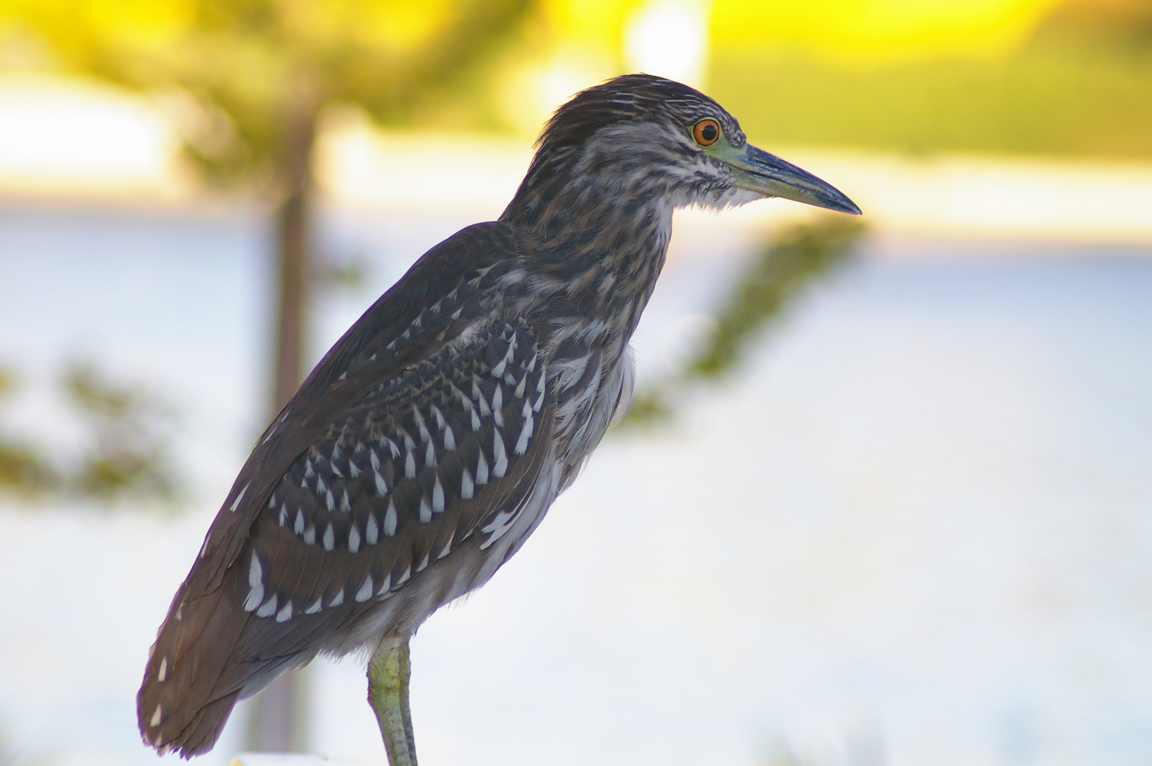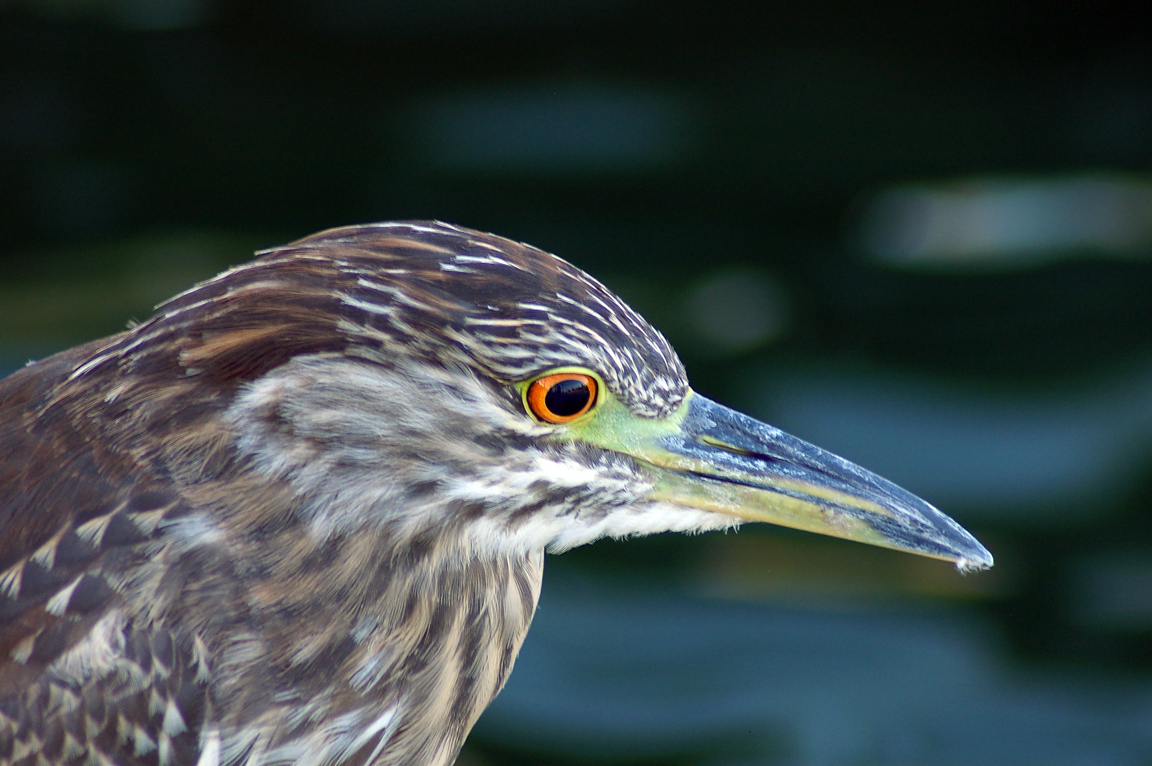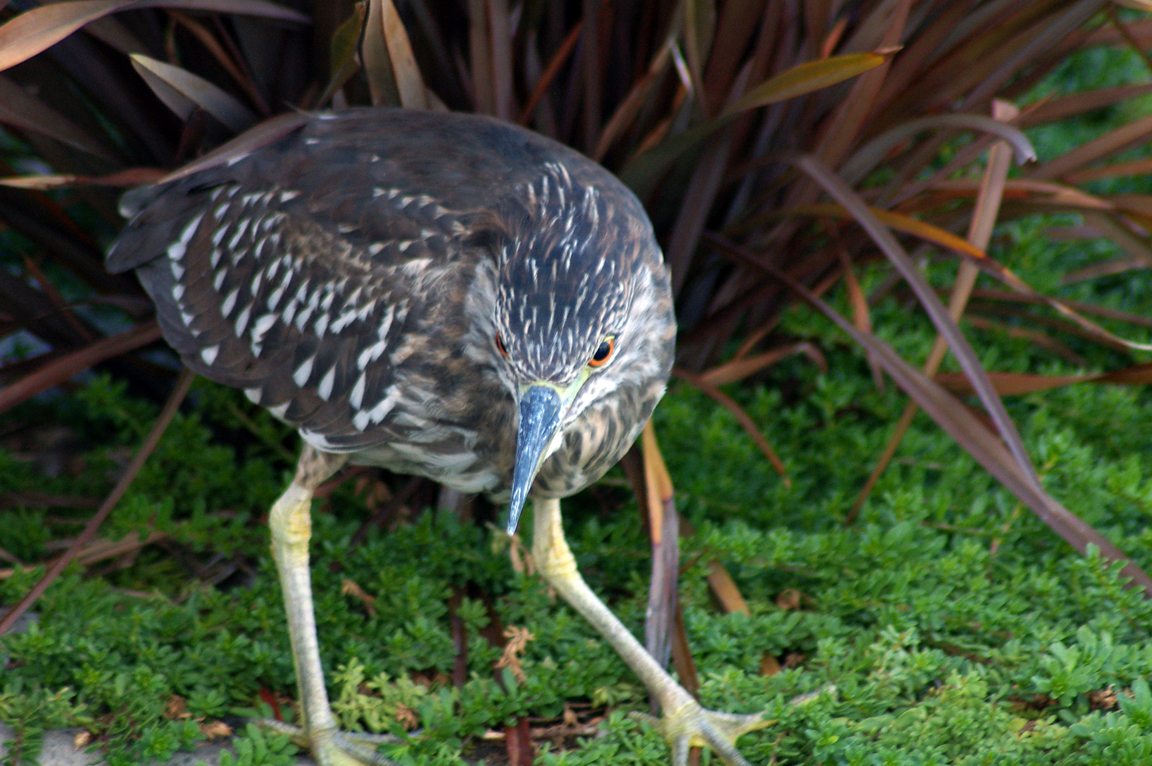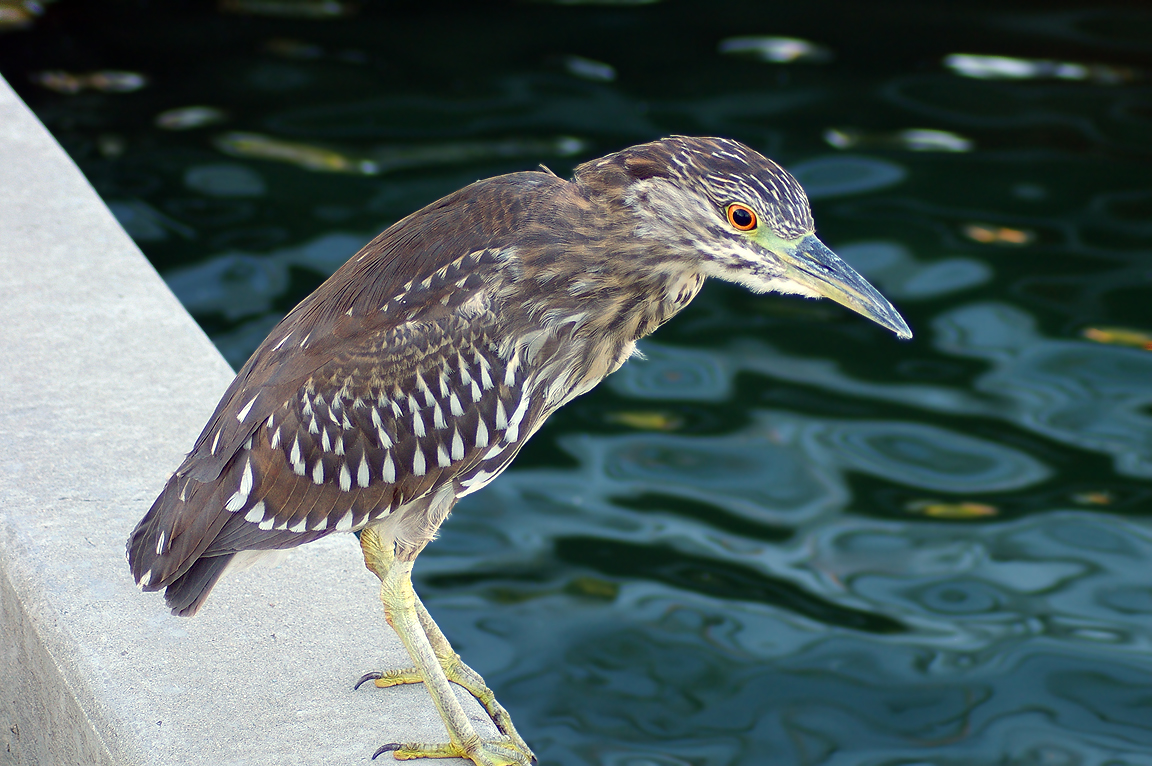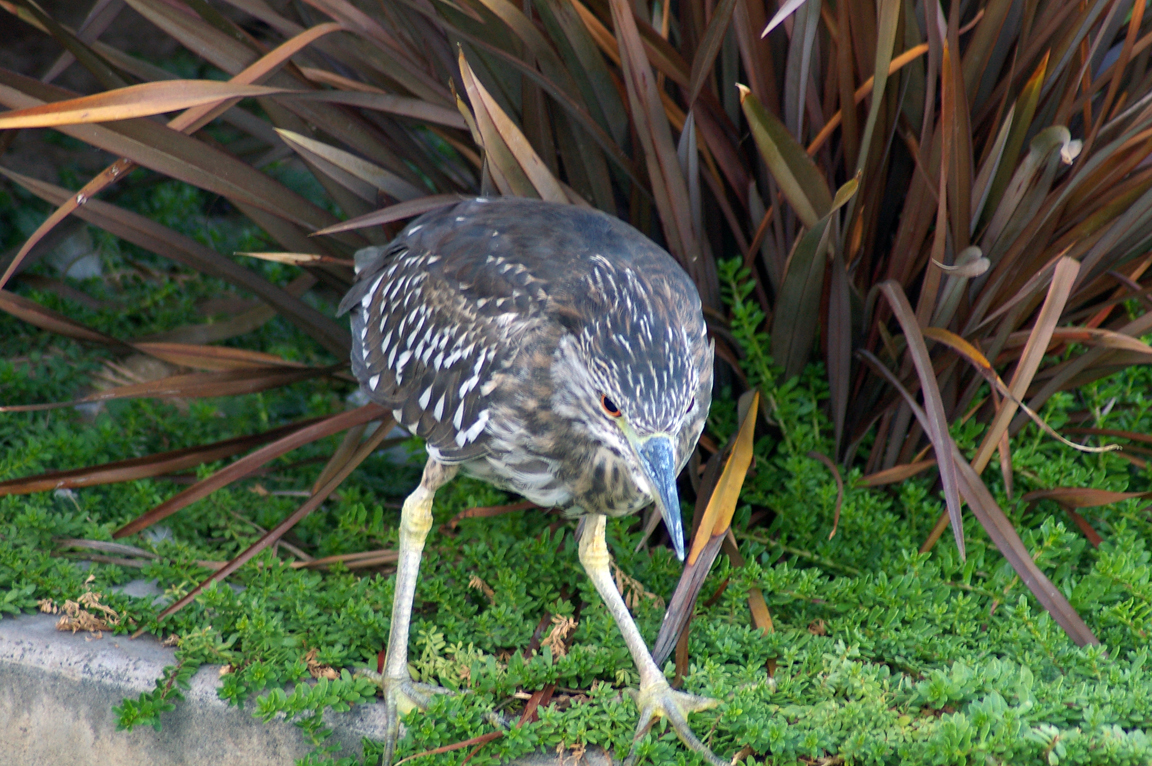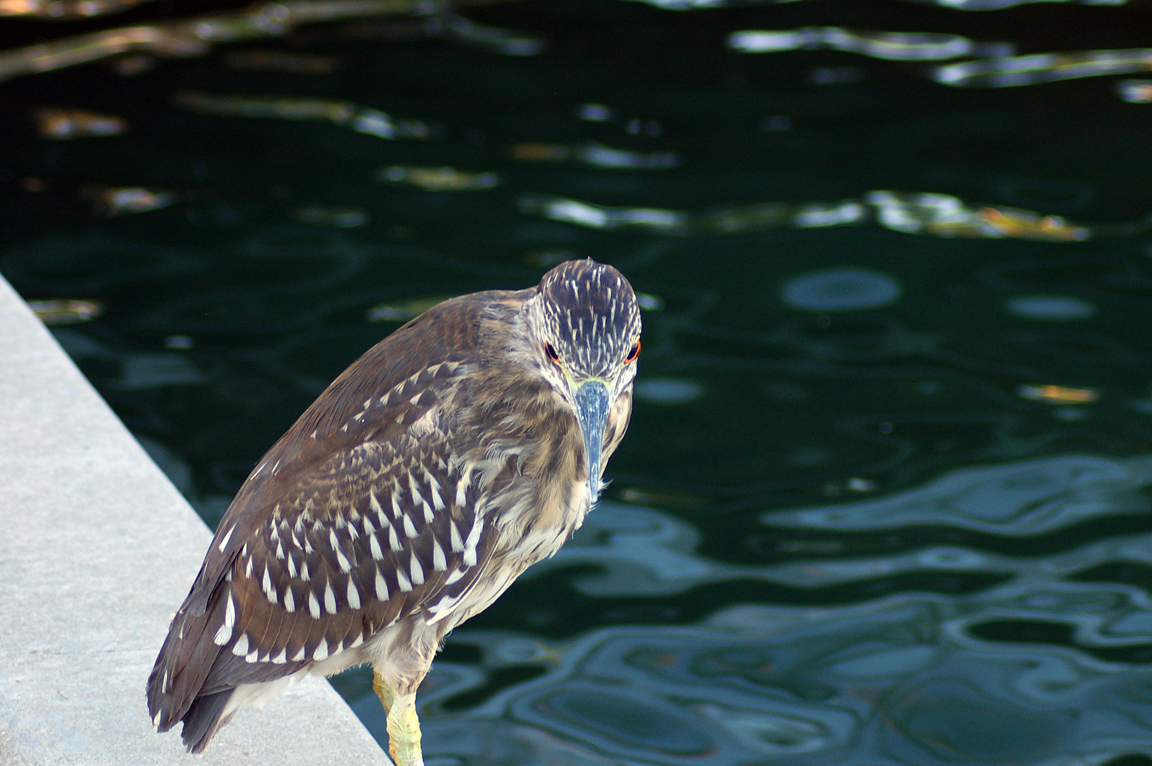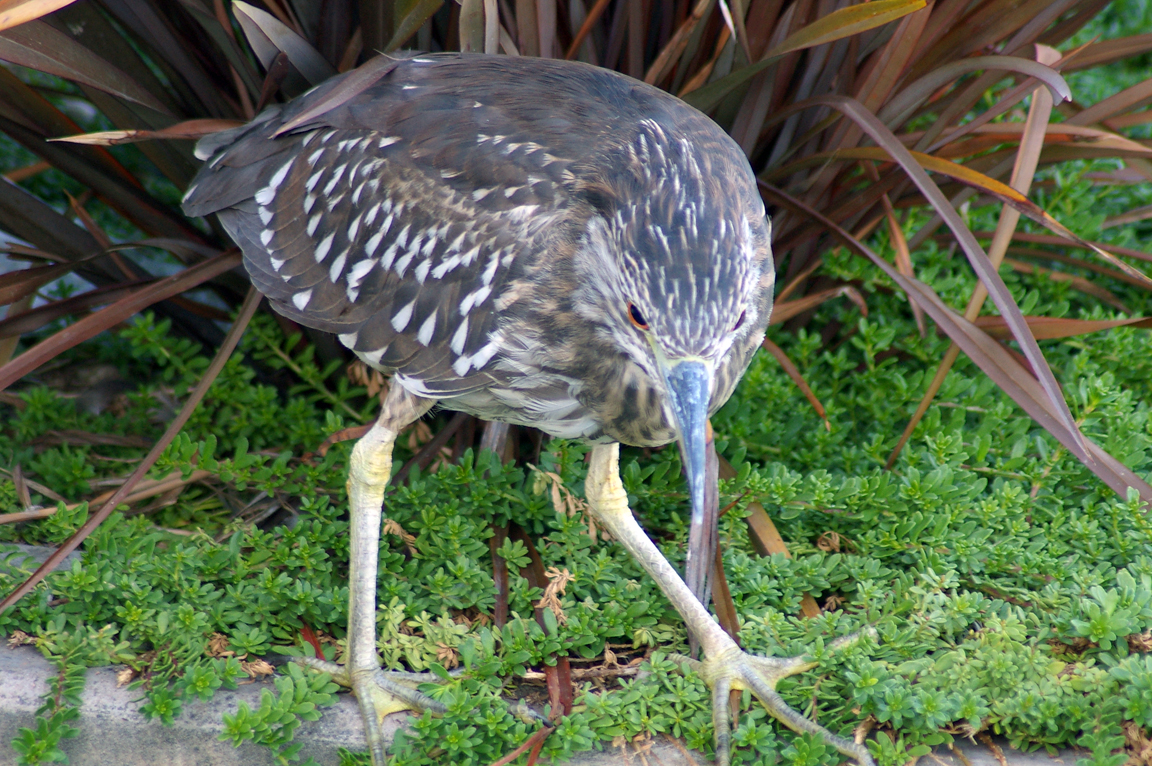|
|
|
 |
Black-crowned Night-Heron
|
| Nycticorax nycticorax | |
With a range that spans five continents, including much of North America, the Black-crowned Night-Heron is the most widespread heron in the world. It is most active at dusk and at night, feeding in the same areas that other heron species frequent during the day.
Interesting Information
-
Young Black-crowned Night-Herons often disgorge their stomach contents when disturbed. This habit makes it easy to study its diet.
-
The Black-crowned Night-Heron may nest in the same tree with ibises or other herons.
-
Adult Black-crowned Night-Herons apparently do not distinguish between their own young and those from other nests, and will brood chicks not their own.
Description
Adult Description
-
Size: 58-66 cm (23-26 in)
-
Wingspan: 115-118 cm (45-46 in)
-
Weight: 727-1014 g (25.66-35.79 ounces)
-
Medium-sized, stocky heron.
-
Short neck and thick black bill.
-
Black cap and back.
-
Wings gray.
-
Underparts white.
-
Long, thin, white plumes coming out of rear of cap.
-
Relatively short, yellowish green or pink legs.
-
Eyes red.
Sex Differences
Sexes similar; female slightly smaller.
Immature
Brown with white spots on the wings and broad, indistinct streaks on the underparts. Bill mostly yellow.
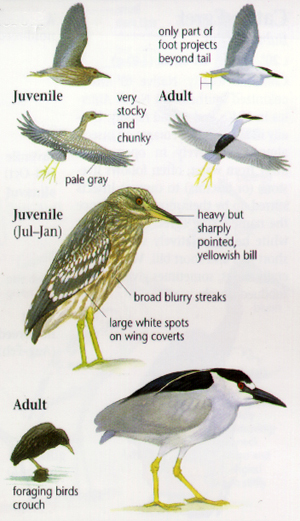
Photo taken from: The Sibley Field Guide by David Allen Sibley
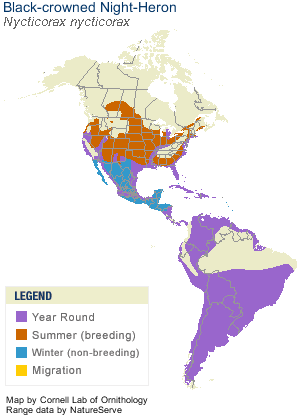
© 2003 Cornell Lab of Ornithology
|
Habitat |
|
Various wetland habitats, including salt, brackish, and freshwater marshes, swamps, streams, lakes, and agricultural fields. |
|
Behavior |
|
Grasps prey; does not stab with bill. |
|
Food |
|
Aquatic invertebrates, fish, amphibians, lizards, snakes, rodents, eggs, and other foods. |
Taxonomy
| Kingdom: | Animalia |
| Phylum: | Chordata |
| Subphylum: | Vertebrata |
| Class: | Aves |
| Order: | Pelecaniformes |
| Family: | Ardeidae |
| Subfamily: | Ardeinae |
| Genus: | Nycticorax |
| Species: | Nycticorax nycticorax |
| Subspecies: | Nycticorax nycticorax falklandicus |
| Nycticorax nycticorax hoactli | |
| Nycticorax nycticorax nycticorax | |
| Nycticorax nycticorax obscurus |
Similar Species |
|
|
Bird Sound |
|
Call a loud, harsh squawk. |
|
Eggs look like this |
|
Photo taken from: ARCTOS Collaborative Collection Management Solution |
Videos
Black-crowned Night-Heron
Juvenile
